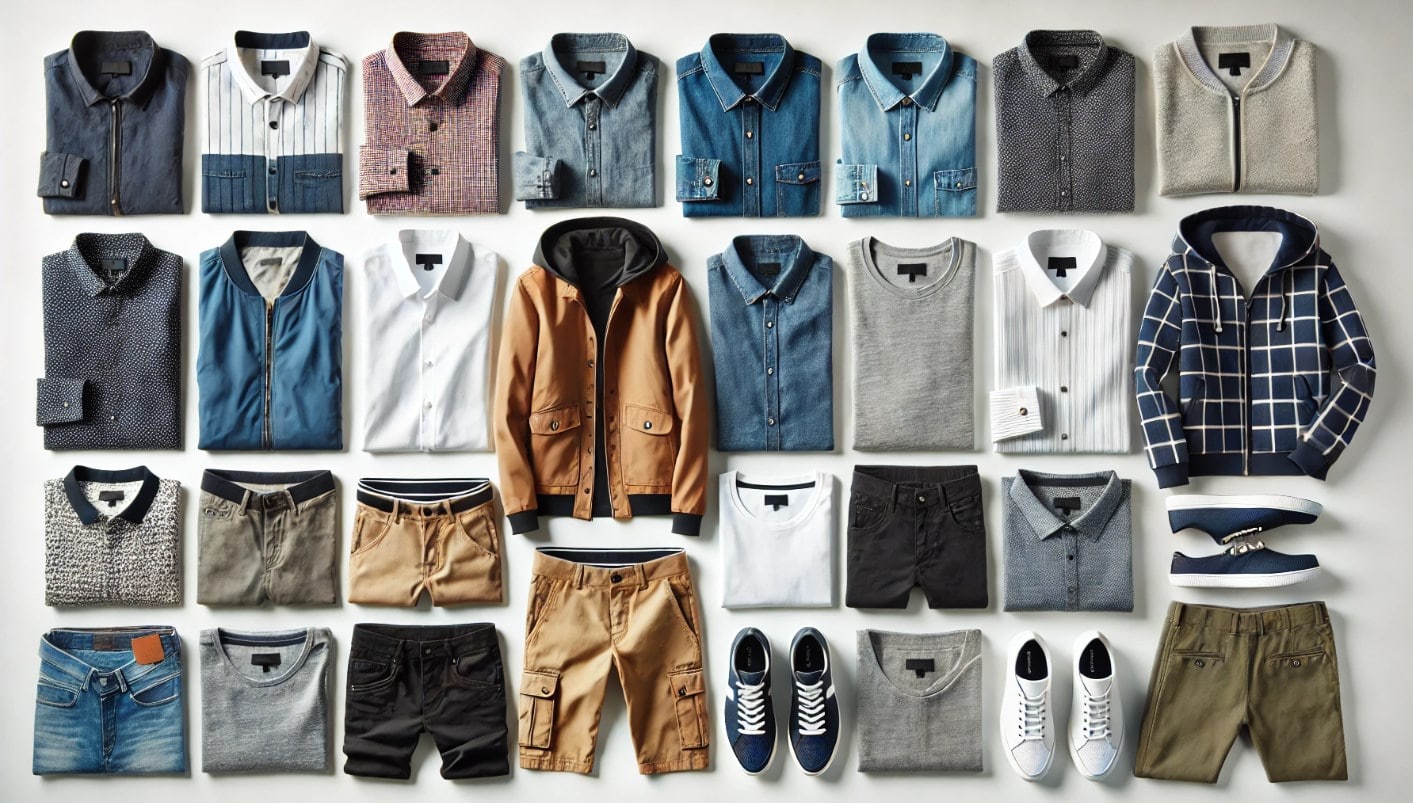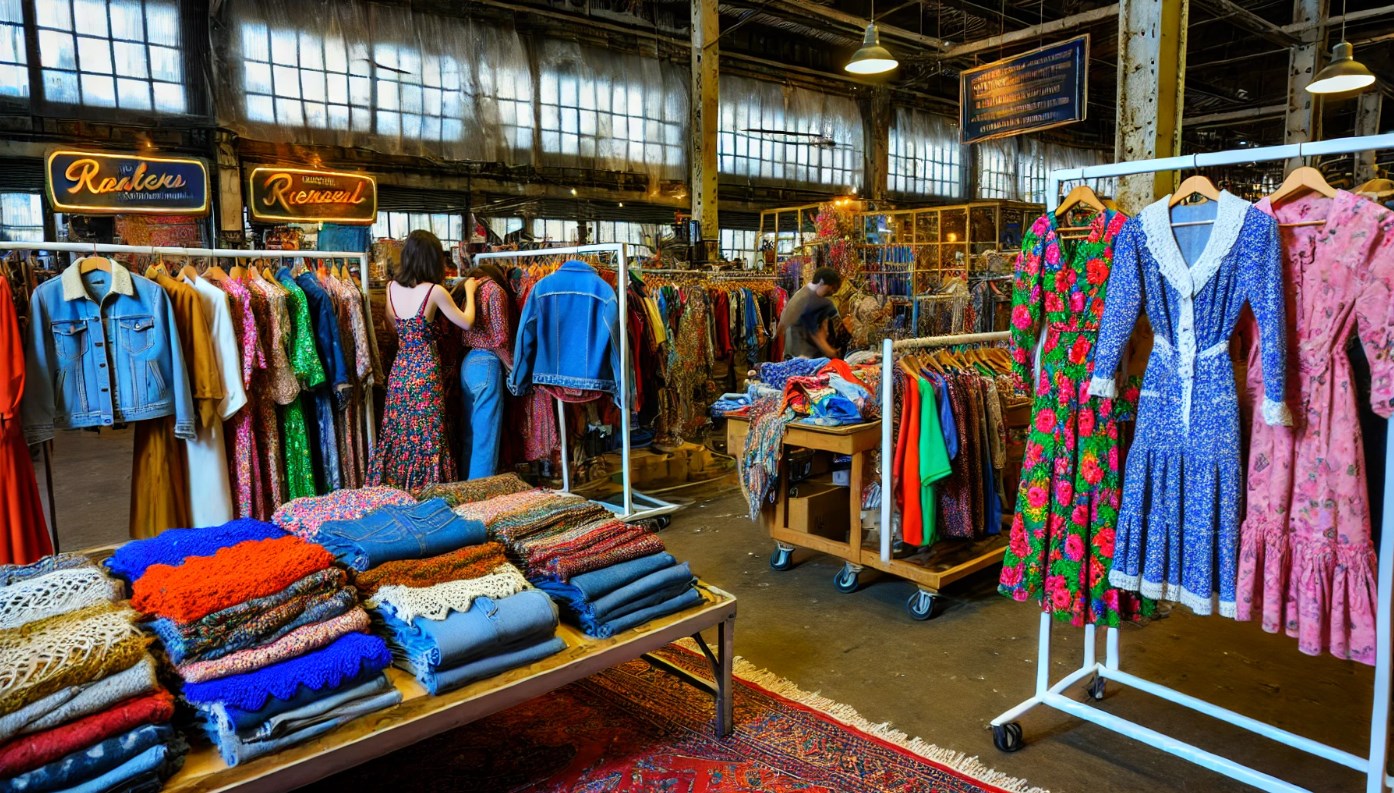Women’s clothing encompasses a wide range of garments designed for female consumers, catering to various occasions, seasons, and personal styles. This sector includes dresses, blouses, skirts, pants, jackets, sweaters, t-shirts, leggings, coats, and swimwear, among others. Women’s clothing is a significant segment of the global textile industry, driven by fashion trends, cultural influences, and functional needs. The diversity in women’s clothing reflects the multifaceted roles and lifestyles of women worldwide.

Percentage of Women’s Clothing Produced in China
China is a dominant player in the global textile and apparel industry, producing a substantial portion of women’s clothing. It is estimated that approximately 60-70% of women’s clothing sold globally is manufactured in China. The country’s extensive manufacturing infrastructure, skilled workforce, and cost-effective production processes make it a preferred destination for clothing production.
The primary provinces in China involved in women’s clothing production include:
- Guangdong: Known for its large garment factories and high-quality production capabilities, Guangdong is a hub for both mass-produced and high-end clothing.
- Zhejiang: Famous for its textile industry, Zhejiang houses numerous clothing manufacturers specializing in a wide range of garments.
- Jiangsu: Another key region with a robust textile and garment industry, Jiangsu is known for producing various types of women’s clothing, from casual wear to formal attire.
- Fujian: Home to many apparel companies, Fujian is particularly known for its sportswear and activewear production.
Types of Women’s Clothing
1. Dresses
Overview: Dresses are one-piece garments that come in various styles, including casual, formal, evening, cocktail, and sundresses. They are designed to suit different occasions and seasons, offering versatility and elegance. Dresses can be tailored to fit closely or flow loosely, depending on the desired look and comfort level.
Target Audience: Dresses appeal to women of all ages, with specific designs targeting different demographics. Younger women often prefer trendy and fashionable dresses, while middle-aged and older women may opt for classic and elegant styles suitable for professional and formal events.
Major Materials: Common materials used in dresses include cotton, polyester, silk, chiffon, and linen.
Retail Price Ranges:
- Walmart: $15 – $50
- Carrefour: €20 – €60
- Amazon: $20 – $100
Wholesale Prices in China: $5 – $25
MOQ: 100-500 pieces
2. Blouses
Overview: Blouses are upper garments that can be styled for both casual and formal wear. They come in various cuts and styles, including button-downs, peasant tops, and tunics. Blouses often feature intricate designs, embroidery, and embellishments, adding a touch of sophistication to any outfit.
Target Audience: Blouses are popular among professional women who wear them to work, as well as students and casual wear consumers who seek stylish yet comfortable clothing.
Major Materials: Common materials used in blouses include cotton, silk, polyester, and rayon.
Retail Price Ranges:
- Walmart: $10 – $35
- Carrefour: €15 – €45
- Amazon: $15 – $60
Wholesale Prices in China: $3 – $15
MOQ: 200-1000 pieces
3. Skirts
Overview: Skirts are lower garments that come in various lengths, such as mini, midi, and maxi, and styles, including pencil, A-line, and pleated skirts. They offer versatility and can be paired with different tops to create diverse looks for various occasions.
Target Audience: Skirts are suitable for office wear, casual outings, and formal events. Women of all ages wear skirts, with specific styles catering to different age groups and fashion preferences.
Major Materials: Common materials used in skirts include denim, cotton, polyester, wool, and silk.
Retail Price Ranges:
- Walmart: $12 – $40
- Carrefour: €15 – €50
- Amazon: $20 – $70
Wholesale Prices in China: $4 – $20
MOQ: 200-500 pieces
4. Pants
Overview: Women’s pants include a wide range of styles such as jeans, trousers, leggings, and joggers, catering to both casual and formal settings. Pants are essential wardrobe staples that offer comfort and versatility.
Target Audience: Pants appeal to a wide-ranging audience, from working professionals who need formal trousers to fitness enthusiasts who prefer leggings and joggers for their activities.
Major Materials: Common materials used in pants include denim, cotton, polyester, and spandex.
Retail Price Ranges:
- Walmart: $15 – $50
- Carrefour: €20 – €60
- Amazon: $25 – $80
Wholesale Prices in China: $6 – $25
MOQ: 100-500 pieces
5. Jackets
Overview: Jackets for women include a variety of styles such as blazers, denim jackets, leather jackets, and winter coats. Jackets are both functional and fashionable, providing warmth and completing outfits with style.
Target Audience: Jackets are popular among professionals, casual wear consumers, and seasonal shoppers looking for protective and stylish outerwear.
Major Materials: Common materials used in jackets include leather, denim, cotton, polyester, and wool.
Retail Price Ranges:
- Walmart: $20 – $70
- Carrefour: €25 – €90
- Amazon: $30 – $150
Wholesale Prices in China: $10 – $40
MOQ: 100-300 pieces
6. Sweaters
Overview: Sweaters are knitted garments designed for warmth and style. They come in various fits and designs, including cardigans, pullovers, and turtlenecks. Sweaters are ideal for fall and winter wear.
Target Audience: Sweaters are suitable for all age groups, with styles catering to casual and professional settings.
Major Materials: Common materials used in sweaters include wool, cotton, acrylic, and cashmere.
Retail Price Ranges:
- Walmart: $15 – $45
- Carrefour: €20 – €55
- Amazon: $25 – $90
Wholesale Prices in China: $5 – $30
MOQ: 100-500 pieces
7. T-shirts
Overview: T-shirts are basic upper garments that come in various styles, including crew neck, V-neck, and graphic tees. They are popular for their comfort and versatility.
Target Audience: T-shirts are universally worn by women of all ages for casual wear.
Major Materials: Common materials used in T-shirts include cotton, polyester, and blends.
Retail Price Ranges:
- Walmart: $5 – $20
- Carrefour: €7 – €25
- Amazon: $10 – $35
Wholesale Prices in China: $1 – $10
MOQ: 500-1000 pieces
8. Leggings
Overview: Leggings are tight-fitting pants made from stretchable materials. They are popular for casual wear and exercise due to their comfort and flexibility.
Target Audience: Leggings appeal to fitness enthusiasts and casual wear consumers.
Major Materials: Common materials used in leggings include spandex, polyester, and nylon.
Retail Price Ranges:
- Walmart: $10 – $30
- Carrefour: €12 – €35
- Amazon: $15 – $50
Wholesale Prices in China: $3 – $15
MOQ: 200-1000 pieces
9. Coats
Overview: Coats are long outer garments designed for warmth and protection against the elements. They come in various styles like trench coats, parkas, and pea coats.
Target Audience: Coats are popular among seasonal shoppers, professional women, and fashion-conscious consumers.
Major Materials: Common materials used in coats include wool, cotton, polyester, and down.
Retail Price Ranges:
- Walmart: $30 – $100
- Carrefour: €40 – €120
- Amazon: $50 – $200
Wholesale Prices in China: $15 – $60
MOQ: 100-300 pieces
10. Swimwear
Overview: Swimwear includes bikinis, one-pieces, and cover-ups designed for beach and poolside activities. They come in various styles to suit different body types and preferences.
Target Audience: Swimwear targets summer shoppers, vacationers, and swimmers.
Major Materials: Common materials used in swimwear include nylon, spandex, and polyester.
Retail Price Ranges:
- Walmart: $10 – $40
- Carrefour: €15 – €50
- Amazon: $20 – $70
Wholesale Prices in China: $3 – $20
MOQ: 200-500 pieces
Ready to source women’s clothes from China?
Major Manufacturers in China
1. Shenzhen Global Weiye Clothing Co., Ltd.
Shenzhen Global Weiye Clothing Co., Ltd. specializes in producing T-shirts, polos, and hoodies. The company is known for its stringent quality control measures and fast turnaround times, making it a reliable choice for businesses looking for high-quality casual wear.
2. Guangzhou Haoyimai Trading Co., Ltd.
Guangzhou Haoyimai Trading Co., Ltd. produces a wide range of women’s fashion clothing, focusing on trendy and high-quality garments. The company excels in manufacturing stylish dresses, blouses, and skirts that cater to current fashion trends.
3. Dongguan Humen Yihao Clothing Co., Ltd.
Dongguan Humen Yihao Clothing Co., Ltd. is renowned for its denim wear, including jeans and jackets. The company has a reputation for producing durable and fashionable denim products that meet international standards.
4. Jiangsu Sunshine Co., Ltd.
Jiangsu Sunshine Co., Ltd. is one of the largest textile manufacturers in China, specializing in woolen fabrics and high-end women’s coats. The company is known for its advanced production techniques and commitment to sustainability.
5. Hangzhou Hualian Garments Co., Ltd.
Hangzhou Hualian Garments Co., Ltd. produces casual and formal wear, with a focus on sustainable and eco-friendly practices. The company offers a range of garments, including blouses, skirts, and pants, made from organic and recycled materials.
6. Foshan Nanhai Yishengda Machinery Co., Ltd.
Foshan Nanhai Yishengda Machinery Co., Ltd. specializes in swimwear and sportswear. The company uses advanced machinery and techniques to produce high-quality, performance-oriented garments that meet the needs of active consumers.
7. Changzhou Jintan Yangyang Clothing Co., Ltd.
Changzhou Jintan Yangyang Clothing Co., Ltd. focuses on knitwear, including sweaters and cardigans. The company is known for its soft fabrics, intricate designs, and commitment to quality, making it a preferred choice for high-end knitwear.
Major Points for Quality Control
Fabric Quality
Ensuring the fabric meets the required standards for durability, colorfastness, and comfort is crucial. Regular testing of fabric samples before mass production helps maintain quality. Quality control teams should perform tensile strength tests, colorfastness evaluations, and shrinkage tests to ensure the fabric’s performance and longevity.
Stitching and Seams
Attention to detail in stitching and seams ensures the garment’s durability and appearance. Regular inspections during production help catch and correct any issues early. Quality inspectors should check for uniformity in stitching, secure seams, and the absence of loose threads or skipped stitches, ensuring the garment’s structural integrity.
Fit and Sizing
Accurate sizing is essential for customer satisfaction. Manufacturers should use standardized size charts and conduct fit tests on models to ensure consistency. Grading rules must be strictly followed to maintain size consistency across different batches, and sample garments should be tested on a variety of body types to ensure a good fit.
Color Consistency
Maintaining consistent color across different batches is critical. Using high-quality dyes and implementing stringent color matching processes can prevent discrepancies. Batch-to-batch color consistency should be monitored using spectrophotometers, and dye lots should be tested for uniformity to avoid noticeable color variations in the final product.
Finishing
Proper finishing techniques, including trimming, pressing, and packaging, enhance the garment’s final appearance. Ensuring all garments meet these standards before shipping is vital. Quality control teams should verify that buttons, zippers, and other accessories are securely attached and that the garments are free of defects such as stains or fabric pulls.
Compliance with Regulations
Adhering to international and local regulations regarding labor practices, environmental impact, and safety standards is essential for maintaining reputation and avoiding legal issues. Manufacturers should ensure compliance with regulations such as REACH, CPSIA, and other relevant standards, conducting regular audits to verify adherence to these requirements.
Recommended Shipping Options
Air Freight
Air freight is ideal for urgent shipments due to its speed. Although more expensive, it ensures quick delivery, making it suitable for high-value or time-sensitive products. This method is particularly beneficial for fashion items with a short shelf life or seasonal demand, allowing businesses to meet tight deadlines and market trends.
Sea Freight
Sea freight is cost-effective for bulk orders. It may take longer but significantly reduces shipping costs, making it ideal for large, non-urgent shipments. This method is suitable for businesses looking to optimize their supply chain costs and manage inventory efficiently, especially when dealing with high-volume orders.
Rail Freight
Rail freight offers a balance between speed and cost, particularly for shipments within the same continent or regions with well-established rail networks. It provides a reliable and eco-friendly option for transporting goods over long distances, reducing the carbon footprint and ensuring timely delivery.






